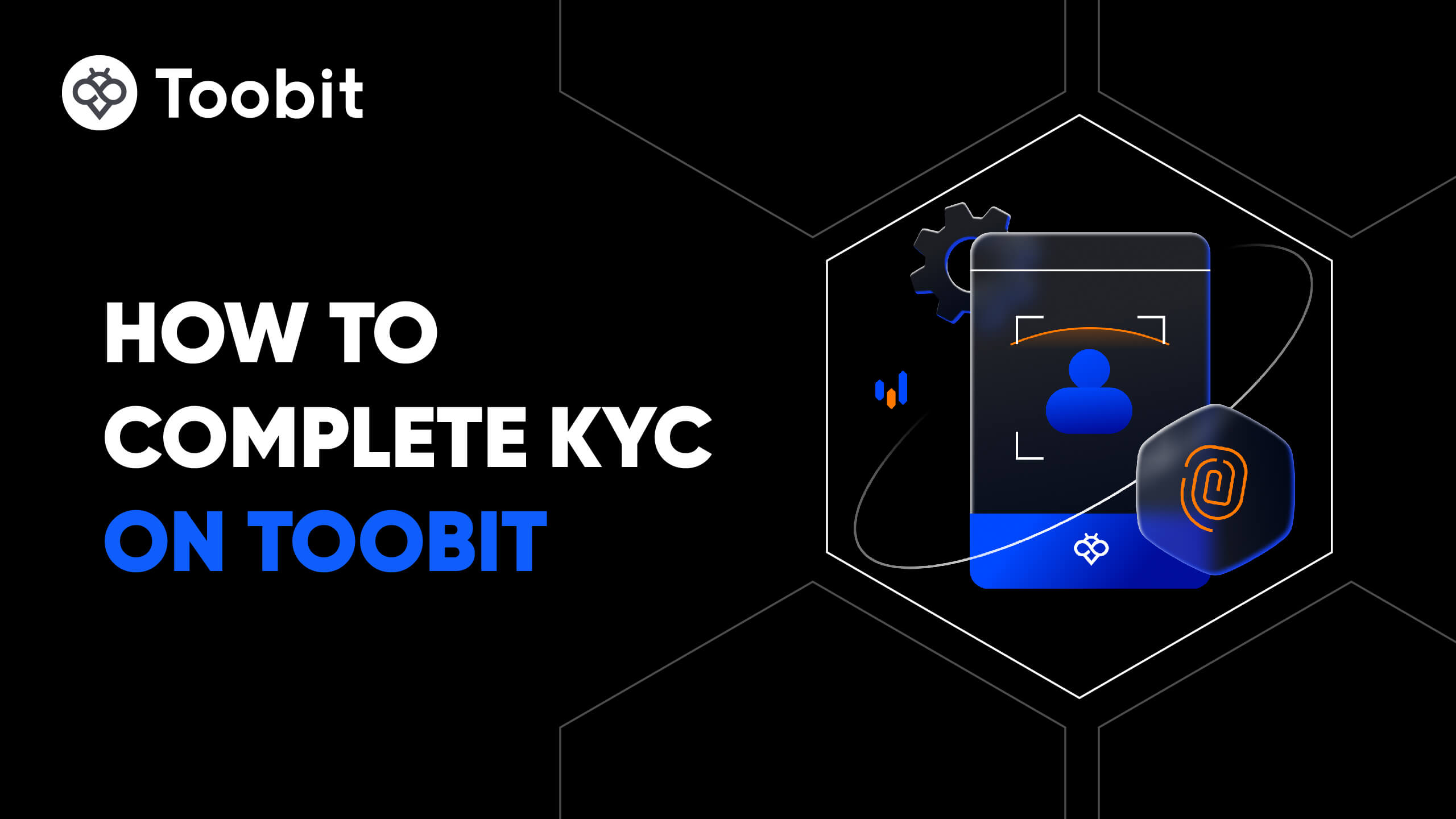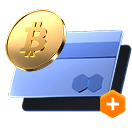Hashflow prijs
HFTHashflow marktinfo
Live Hashflow prijs vandaag in USD
Hoeveel is 1 HFT waard in ?
Over Hashflow(HFT)
Hashflow prijsverloop
Waarom fluctueert de prijs van Hashflow altijd?
Welke factoren beïnvloeden de prestaties van Hashflow prijzen?
Wereldwijde Hashflow prijzen
Hoe Hashflow te kopen
Uw gratis Toobit-account aanmaken
Meld u aan op Toobit met uw e-mailadres/mobiel telefoonnummer en woonland, en maak een sterk wachtwoord aan om uw account te beveiligen.
Verifieer uw identiteit
Voltooi identiteitsverificatie door uw persoonlijke gegevens en een geldig foto-ID in te dienen.
Voeg een betaalmethode toe en koop Hashflow (HFT)
Voeg een creditcard/debetkaart of bankrekening toe nadat u uw Toobit-account hebt geverifieerd. Gebruik meerdere betaalopties om Hashflow op Toobit te kopen.
Handel HFT perpetual futures
Na je succesvolle registratie op Toobit en het aankopen van USDT of HFT tokens, kun je beginnen met het handelen in derivaten, waaronder HFT futures en margin trading om je inkomen te verhogen.
Neem deel aan HFT Copy Trading met Lead Traders
Na registratie op Toobit en het succesvol kopen van USDT of HFT tokens, kun je ook beginnen met copy trading door Lead Traders te volgen.
Waar kan ik Hashflow kopen?
Koop crypto op de Toobit-app
Meld u binnen enkele minuten aan om crypto te kopen met een creditcard of bankoverschrijving.
Handel op Toobit
Stort uw cryptocurrencies bij Toobit en geniet van hoge liquiditeit en lage transactiekosten.
Videosectie — snelle verificatie, snel handelen

Hoe identificatie te voltooien op Toobit en jezelf te beschermen tegen fraude
- 1.Log in op uw Toobit-account.
- 2.Als je nieuw bent bij Toobit, bekijk dan onze tutorial over hoe je een account aanmaakt.
- 3.Stap : Klik op het profielpictogram in de rechterbovenhoek van de navigatiebalk en tik vervolgens op de Identificatie pagina.
FAQ Over HFT
Wat is Hashflow (HFT)?
Hashflow Exchange OS (of xOS) is een geavanceerde engine ontworpen om elke beurs om te vormen tot een bewijsbare beurs, een revolutionair concept in crypto-handel. Wij geloven dat bewijsbare beurzen de volgende evolutie in de industrie vertegenwoordigen, waarbij de naadloze gebruikerservaring (UX) en prestaties van een Central Limit Order Book (CLOB) — de kernstructuur achter elke gecentraliseerde beurs — worden gecombineerd met het extra voordeel van bewijsbaarheid. Dit zorgt voor verbeterde veiligheid, transparantie en vertrouwen in handelsactiviteiten.Hashflow’s RFQ DEX: Slippage-vrije Transacties GaranderenHet hart van Hashflow’s RFQ (Request for Quote) DEX-oplossing is de integratie van professionele marktmakers die liquiditeit in de markt beheren. Deze marktmakers moeten hun offertes cryptografisch ondertekenen, zodat de prijs gedurende de gehele handelsduur ongewijzigd blijft. Dit elimineert slippage en garandeert vaste prijzen, waardoor gebruikers een betrouwbaardere handelservaring krijgen.Hashflow Aggregator+: Optimale Liquiditeit met Slimme OrderrouteringHashflow’s DEX Aggregator, bekend als Aggregator+, maakt gebruik van een Slimme Orderroutering (SOR) systeem gebaseerd op intentie-gebaseerde algoritmen. Deze geavanceerde architectuur zorgt ervoor dat gebruikers de best mogelijke prijzen ontvangen door de meest efficiënte handelsroutes te identificeren over verschillende liquiditeitsbronnen, waaronder PMMs (Professionele Marktmakers) en AMMs (Geautomatiseerde Marktmakers).Met Aggregator+ kunnen gebruikers transacties van elke omvang met vertrouwen uitvoeren, wetende dat ze de meest concurrerende prijs krijgen van de beste beschikbare liquiditeitspools. Deze technologie stroomlijnt het handelsproces, waardoor Hashflow een topkeuze is voor gebruikers die snelle, efficiënte en kosteneffectieve transacties zoeken.Hoe HFT te kopen
Om HFT te kopen, kunt u de volgende algemene stappen volgen:1. Kies een cryptocurrency-uitwisseling en maak een account aanBegin met het selecteren van een gerenommeerd en betrouwbaar cryptocurrency-platform dat HFT-handel ondersteunt. U kunt HFT ook hier op Toobit kopen. Meld u aan.2. Voltooi verificatie (niet verplicht):Lees onze Hoe Identificatie op Toobit te Voltooien gids voor meer informatie.3. Stort geld:Stort geld op uw Toobit-account. Dit kan worden gedaan via credit-/debitcards of uw crypto-portemonnee.4. Navigeer naar HFT:Zodra uw account is gefinancierd, navigeer naar de Markten-sectie van het platform.5. Koop HFT:Zoek HFT in de lijst met beschikbare cryptocurrencies.Plaats een kooporder. Lees onze Hoe Crypto op Toobit te Kopen gids voor meer informatie.Hoe HFT Verkopen?
Je kunt HFT verkopen voor USDT hier op Toobit. Lees onze gids over Hoe Spot te Handelen op de Toobit Website voor meer informatie.Wat is de huidige prijs van HFT?
Ben je op zoek naar de HFT-prijs? De live HFT prijs wordt in real-time bijgewerkt op Toobit.Hoe HFT Opnemen op Toobit?
Je kunt HFT en andere cryptotokens hier op Toobit omzetten naar USDT. Lees onze Hoe Crypto Opnemen op Toobit gids voor meer informatie.Hoe werkt Hashflow?
Hashflow maakt gebruik van een hybride on-chain/off-chain RFQ-engine om een veiligere en efficiëntere handelservaring te bieden. Door off-chain offertes op te halen van market makers die liquiditeit beheren in on-chain pools, beschermt Hashflow effectief zijn transacties tegen veelvoorkomende problemen zoals slippage en MEV (Miner Extractable Value) exploits, ongeacht of transacties worden uitgevoerd op een enkele blockchain of over meerdere ketens.Off-Chain Prijsstelling voor Geavanceerd LiquiditeitsbeheerHet hybride model stelt market makers in staat om geavanceerde prijsstrategieën te gebruiken die off-chain gegevens zoals historische activaprijzen, marktvolatiliteit en andere reële factoren omvatten. Dit maakt nauwkeurigere activaprijzen mogelijk en zorgt voor strakkere bied-laat spreads. Door prijsstelling off-chain te verplaatsen, biedt Hashflow nul slippage en verbeterde liquiditeit, wat zorgt voor een naadloze en MEV-bestendige handelsomgeving.Voor handelaren betekent dit dat ze toegang hebben tot betere prijsaanbiedingen en verbeterde uitvoering van transacties, terwijl ze de risico's van slippage en MEV-exploitatie in cross-chain of single-chain transacties verminderen.Wat zijn de potentiële gebruikstoepassingen voor Hashflow?
Hashflow's Gedecentraliseerde Handel: Nieuwe Gebruikstoepassingen en Cross-Chain Mogelijkheden OntgrendelenHashflow's unieke benadering van gedecentraliseerde handel opent een breed scala aan gebruikstoepassingen voor handelaren en investeerders. De kern van Hashflow's platform is het RFQ (Request for Quote) model, dat marktmakers in staat stelt om een breed scala aan activaklassen te prijzen, niet alleen stablecoins of top-tier activa. Deze innovatieve functie stelt Hashflow in staat om de naadloze handel in complexe financiële producten, zoals opties en ETF's, te faciliteren, die traditioneel moeilijk te verhandelen waren in DeFi (Decentralized Finance) omgevingen.Volledig-Native Cross-Chain Swaps met Gegarandeerde PrijsuitvoeringEen van de opvallende kenmerken van Hashflow is de volledig-native cross-chain swap functionaliteit. In tegenstelling tot andere platforms die vertrouwen op bruggen of synthetische activa, stelt Hashflow gebruikers in staat om cross-chain transacties direct uit te voeren, met gegarandeerde prijsuitvoering over een of meer blockchains. Dit biedt handelaren de mogelijkheid om activa over meerdere netwerken te wisselen zonder de risico's die doorgaans gepaard gaan met tussenliggende lagen.Deelname aan de Hashverse en Verdien HFT BeloningenVoor HFT tokenhouders biedt Hashflow een spannende kans om deel te nemen aan de Hashverse, een platform waar gebruikers single-player quests kunnen voltooien om extra HFT (Hashflow Token) beloningen te verdienen. Deze gamified ervaring verhoogt niet alleen de gebruikersbetrokkenheid, maar biedt ook een manier om HFT compensatie te verhogen door deelname aan het ecosysteem.Wat is de geschiedenis van Hashflow?
Hashflow, gelanceerd in april 2021, is een gedecentraliseerd uitwisselingsplatform (DEX) gecreëerd door een team van experts uit diverse achtergronden, waaronder lucht- en ruimtevaarttechniek, informatica en strategisch advies. De oprichters — Varun Kumar, Victor Ionescu en Vinod Raghavan — brengen uitgebreide ervaring mee van toporganisaties zoals NASA, Airbnb, Google en Goldman Sachs.Sinds de oprichting heeft Hashflow een aanzienlijk volume aan transacties verwerkt en zich gevestigd als een toonaangevende speler in de DeFi-ruimte. In 2023 introduceerde Hashflow de Hashverse, een baanbrekende gamified DAO (Decentralized Autonomous Organization) gecreëerd in samenwerking met Superconductor, een bedrijf opgericht door de creatieve geesten achter enkele van de meest iconische Hollywood-franchises.Met zijn innovatieve benadering van gedecentraliseerde financiën blijft Hashflow de grenzen verleggen van wat mogelijk is in de DEX-markt, en biedt het geavanceerde oplossingen voor DeFi-handel en gebruikersbetrokkenheid.Hashflow Prijsvoorspellingsindicatoren
Voortschrijdende gemiddelden behoren tot de meest gebruikte tools voor prijsvoorspelling van Hashflow. Zoals de naam al aangeeft, berekent een voortschrijdend gemiddelde de gemiddelde slotkoers voor HFT (Hashflow Token) over een specifieke tijdsperiode, verdeeld in consistente periodes. Bijvoorbeeld, een 12-daags eenvoudig voortschrijdend gemiddelde (SMA) is de som van de slotkoersen van HFT over de laatste 12 dagen, gedeeld door 12, om de gemiddelde slotkoers voor die periode te geven.Eenvoudig Voortschrijdend Gemiddelde (SMA) vs. Exponentieel Voortschrijdend Gemiddelde (EMA)Naast het eenvoudige voortschrijdend gemiddelde (SMA) vertrouwen handelaren ook op het exponentieel voortschrijdend gemiddelde (EMA). In tegenstelling tot de SMA, legt de EMA meer gewicht op recente prijzen, waardoor het gevoeliger is voor de huidige marktomstandigheden en recente prijsbewegingen. Dit stelt de EMA in staat sneller te reageren op markttrends.Belangrijke Voortschrijdende Gemiddelden voor Hashflow (HFT)In de cryptomarkt zijn 50-daagse, 100-daagse en 200-daagse voortschrijdende gemiddelden enkele van de meest gebruikte indicatoren voor het identificeren van weerstand- en ondersteuningsniveaus. Als HFT boven een van deze belangrijke voortschrijdende gemiddelden beweegt, wordt dit vaak geïnterpreteerd als een bullish signaal voor Hashflow. Omgekeerd, als de prijs onder een significant voortschrijdend gemiddelde daalt, kan dit wijzen op zwakte of een potentiële neerwaartse trend in de HFT-markt.Aanvullende Technische Indicatoren voor HFT PrijsvoorspellingNaast voortschrijdende gemiddelden gebruiken handelaren vaak tools zoals de Relative Strength Index (RSI) en Fibonacci retracement niveaus om toekomstige prijsbewegingen van HFT te voorspellen. Deze indicatoren helpen handelaren om overbought of oversold condities te beoordelen en potentiële prijsretracements of -uitbreidingen te voorspellen.Hoe lees je Hashflow-grafieken en voorspel je prijsbewegingen?
Candlestick-grafieken worden veel gebruikt door handelaren omdat ze meer gedetailleerde inzichten bieden dan eenvoudige lijngrafieken. Deze grafieken tonen de prijsactie van Hashflow (HFT) over verschillende tijdsbestekken, waardoor handelaren prijstrends op verschillende niveaus van granulariteit kunnen analyseren. Handelaren kunnen bijvoorbeeld een 5-minuten candlestick-grafiek selecteren voor zeer kortetermijnprijsbewegingen of een wekelijkse candlestick-grafiek om langetermijntrends te identificeren. Andere populaire tijdsbestekken zijn 1-uur, 4-uur en 1-dag candlestick-grafieken.Hoe lees je een 1-uur candlestick-grafiek voor HFTLaten we een 1-uur candlestick-grafiek als voorbeeld nemen om te zien hoe deze waardevolle gegevens biedt over de prijsactie van Hashflow. Elke candlestick vertegenwoordigt 1 uur handelsactiviteit en toont belangrijke informatie zoals de openingsprijs, sluitingsprijs en de hoogste en laagste prijzen die HFT binnen die periode heeft bereikt. Dit stelt handelaren in staat om snel de prijsbeweging binnen een bepaald uur te beoordelen.Interpreteren van Candlestick-kleurenDe kleur van de candlestick is een cruciaal aspect om te monitoren. Een groene candlestick geeft aan dat de sluitingsprijs hoger is dan de openingsprijs, wat een opwaartse trend aangeeft. Aan de andere kant toont een rode candlestick dat de sluitingsprijs lager is dan de openingsprijs, wat meestal een neerwaartse trend suggereert. Sommige grafieken kunnen holle of gevulde candlestick-lichamen gebruiken in plaats van kleur om dezelfde informatie weer te geven.Wat beïnvloedt de prijs van Hashflow?
Net als elke andere cryptocurrency wordt de prijsactie van Hashflow (HFT) gedreven door vraag en aanbod dynamiek. Deze factoren kunnen worden beïnvloed door een reeks fundamentele gebeurtenissen, waaronder block reward halveringen, hard forks en protocol updates. Naast deze technische gebeurtenissen kunnen regelgeving, wijdverspreide adoptie door bedrijven en overheden, en zelfs hacks van cryptocurrency exchanges de prijs van HFT aanzienlijk beïnvloeden. Zoals bij elk digitaal activum kunnen gebeurtenissen in de echte wereld schommelingen in de prijs veroorzaken, waardoor de marktkapitalisatie van Hashflow vatbaar is voor snelle veranderingen binnen korte tijdsbestekken.Het Monitoren van Hashflow Prijsbewegingen: De Rol van ""Whales""Bij het maken van een Hashflow prijsvoorspelling houden veel handelaren de activiteiten van HFT-whales in de gaten. Deze whales zijn entiteiten of individuen die grote hoeveelheden Hashflow tokens beheersen. Aangezien de Hashflow-markt relatief kleiner is vergeleken met traditionele financiële markten, kunnen deze whales een aanzienlijke invloed uitoefenen op HFT-prijsbewegingen. Grote koop- of verkooporders van deze marktdeelnemers kunnen leiden tot substantiële prijsverschuivingen, waardoor het essentieel is voor handelaren om hun activiteit nauwlettend te volgen.


